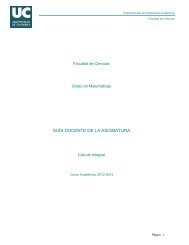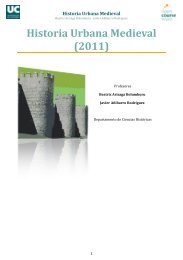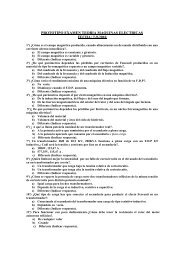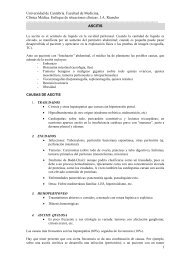Chemical Process Design
Chemical Process Design
Chemical Process Design
Create successful ePaper yourself
Turn your PDF publications into a flip-book with our unique Google optimized e-Paper software.
HEAT TRANSFER EQUIPMENT SIZING<br />
Heat exchanger types used in chemical process<br />
By function<br />
- Refrigerants (air or water) - Condensers (v, v+l l) - Reboilers, vaporizers (lv) - Exchangers in general<br />
By constructive shape<br />
- Double pipe exchanger: the simplest one - Shell and tube exchangers: used for all applications<br />
- Plate and frame exchangers - Air cooled: used for coolers and condensers<br />
- Direct contact: used for cooling and quenching - Jacketed vessels, agitated vessels and internal coils<br />
- Fired heaters: Furnaces and boilers<br />
Shell and tube countercurrent exchanger, steady state<br />
Q = U A ∆T lm<br />
Q: From the energy balance<br />
U: Estimation of heat transfer coefficient. Depending on configuration and media used<br />
in the Shell and Tube side: L-L, Condensing vapor-L, Gas-L, Vaporizers). (Perry's<br />
Handbook, 2008; www.tema.org).<br />
A: Area<br />
∆T lm : Logarithmic Mean ∆T = (T1-t2)-(T2-t1)/ln (T1-t2/T2-t1)<br />
- If phase changes Approximation of 2 heat exchangers (A=A1+A2)<br />
- Maximum area A ≤ 1000 m 2 , else Parallel HX<br />
MPF: Fm (Fp + Fd)<br />
H1<br />
C11<br />
T1 T2<br />
t2<br />
EX1<br />
t1<br />
H11<br />
C1<br />
12

















